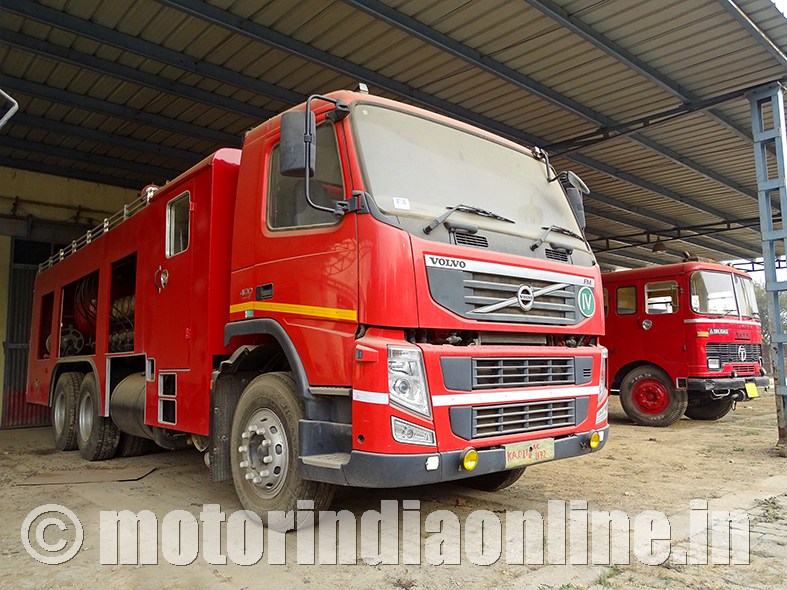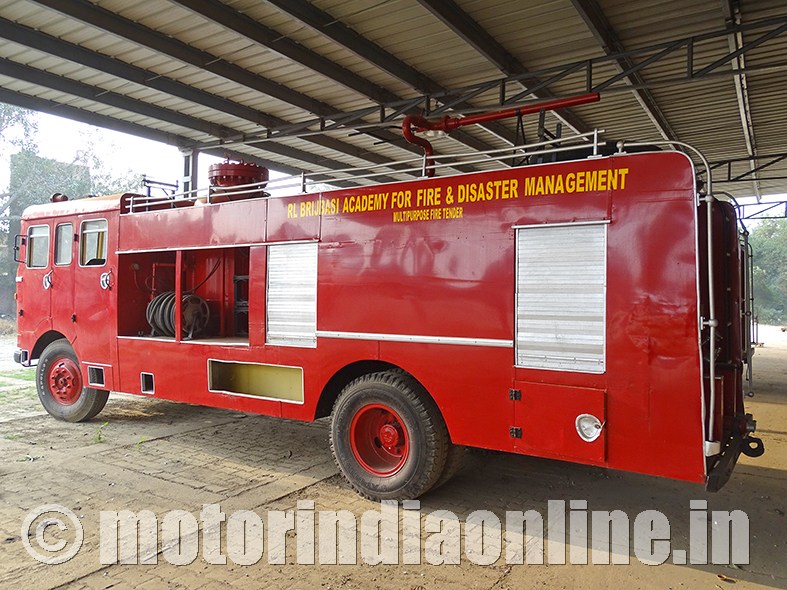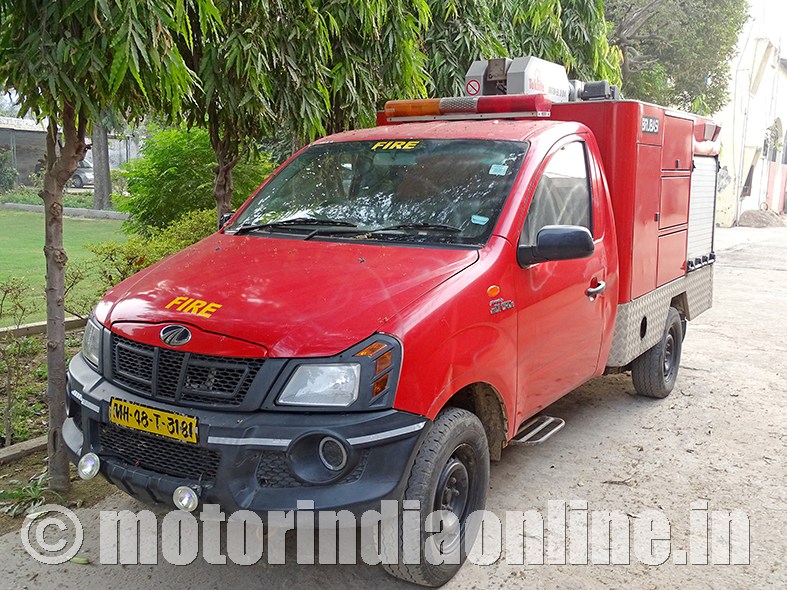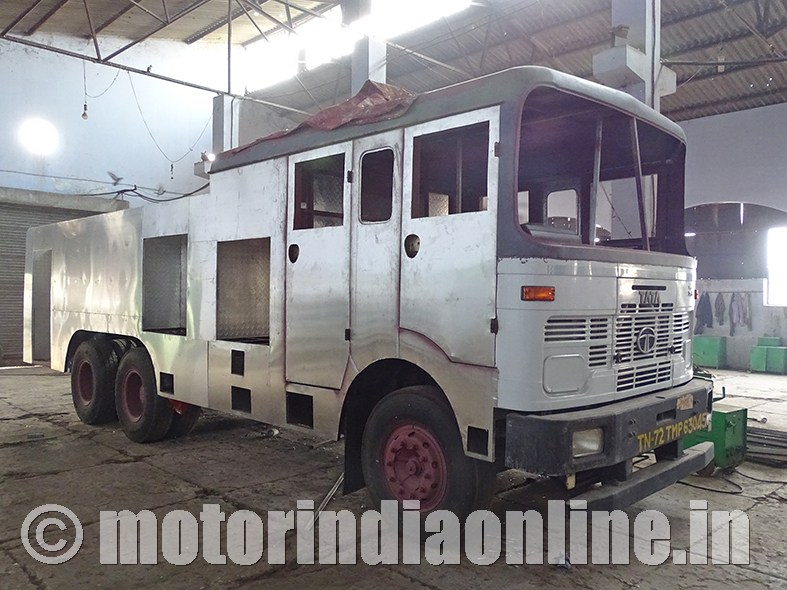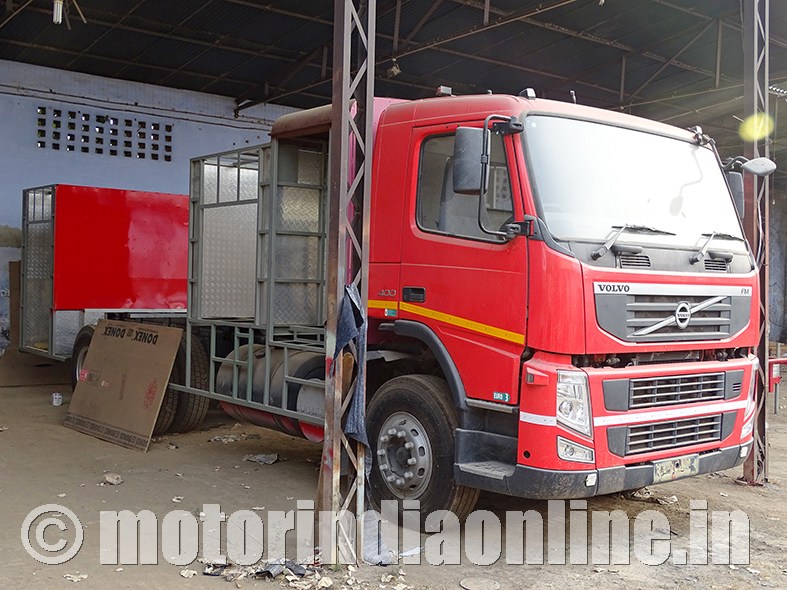The Mathura-based Brijbasi Hitech Udyog Ltd. (BHTUL) is one of the pioneers and leading manufacturers of fire tenders in India. MOTORINDIA got in touch with the company to catch some trends in this niche segment.
Fire engines are not something that we see every day, but the times we spot them, they either cruise past us in no time, or we ourselves are caught up in the grip of emergency that we pay no heed to them. The very image of a red-coloured mammoth truck with a domineering bell sound is indelible in everyone’s memories, but the story of how and who makes them is lesser known. All we know is that they are fabricated by someone locally, and some premium fire fighting vehicles may be imported. Since they don’t cater to the mainstream sectors of transportation or public utility, our knowledge of them is also restricted.
Having said that, this niche segment of special application vehicles is having huge demand in India. With rapid expansion of urban areas and population density in high-rise buildings, there is a subsequent raise in fire risks in settlements and public places, for which local governmental agencies are to be equipped. More and more industrial units, power plants, mining units and airports are coming up, they are mandated to maintain logistical support apparatuses for fire management.
The rough annual demand for fire fighting vehicles in the country stands at around 300 units. Market analysts also opine that there has been a consistent growth in this segment over the recent years, with sales likely to go up with on account of demand from fire brigades of Tier 2 and Tier 3 cities. Catering to the demands are over 40 fabricators across the country, who are largely in the unorganized and smaller in scales, specialized in making regular ‘no-frills’ budget fire tenders using entry-level truck chassis. On the other side of the spectrum are a few medium-scale manufacturers catering to the premium side of the segment. They focus their businesses more on advanced and custom-application models built on premium truck platforms.
Pioneer in firefighting vehicles
Established in 1971, Brijbasi Hitech is one of the pioneers who began fabricating fire tenders indigenously in the country. Before that, fire engines were imported as fully-built units, and their demand was also minimal as they were not widely used except for metros and cities. Says Mr. Rajesh Agrawal, Executive Director, BHTUL: “Our first big order was a 60 crash fire trucks for the Airports Authority of India in 1975. Till date, we have delivered over 7,000 fire trucks, including exports, all custom-made for unique requirements of the buyers”.
Their clientele includes State and municipal fire brigades, oil refineries, ONGC projects, steel plants, industrial corporations and PSUs, thermal power units, fertilizer and cement complexes, ports, and civil aviation. Defence applications is a yet another vertical that Brijbasi Hi-tech caters to, the company is constantly involved in prototyping of ‘Truck FF Light and Large’ platforms with the Ministry of Defence. In fact, BHTUL is a leading maker of air field crash fire tenders in Asia. It has supplied over 150 units of crash fire tenders to the Indian Air Force so far, and has also fabricated 110 units through BEML of Bengaluru.
The product range that Brijbasi is specialized in covers water tenders and water bousers, industrial and multi-purpose application tenders (foam, CO2, and DCP), advanced foam tenders for special applications, emergency and disaster rescue tenders, air crash fire fighters, aerial ladder platforms (hydraulic) on trucks, defence firefighting vehicles, and water cannon (riot control) vehicles.
Perhaps, BHTUL is the first to make water-mist firefighting systems in India. Manufacturing of these products in three facilities, of which two are located in Mathura and Mumbai. Mathura facilities alone employ over 150 employees, and can commission 100-150 vehicles per annum. The Mumbai facility can roll out 50-100 units, adds the company.
Chassis, Components, and Business
The Executive Director Mr. Rajesh Agrawal, who heads manufacturing and R&D at Mathura, reveals that there are some five macro-processes involved in the manufacture of fire trucks, including selection of chassis and fire-dousing materials, designing of tanks and body, equipment and electrical, assembly, and rigorous testing. It takes over 25 days to finish a unit, with over 300 parts sourced from over 200 suppliers, he adds.
Some of the vendors his company relies on include Hindalco and Tata Steel (for metal or alloy applications), Akron, Godiva, Iveco Magirus, Rosenbauer and Teklite for firefighting equipment and pumps, and Bronto Skylift and Magirus for aerial ladders. Brijbasi does manufacture pumps and other equipment in-house at its Mathura plant, which are used in standard and entry-level fire tenders.
The truck chassis, which is the stellar component of a fire truck, is either chosen by the maker itself or supplied by the customer based on their unique requirements. Key criteria in chassis selection include ground clearance, inter-axle clearance, angle of approach and departure, power output, and cost affordability. They are usually sourced from Tata Motors, Ashok Leyland and Eicher for standard and medium-range tenders. For advanced and special application purposes, TATRA, Volvo FM, MAN CLA, and Mercedes-Benz Actros platforms are used.
In the initial days, BHTUL started operations by importing chassis frames from the Iveco Margirus and TATRA, but later on Indian OEMs started supplying sturdy and capable chassis range to suit the firefighting needs, says Mr. Agrawal. “There is nothing in firefighting vehicles and equipment that can’t be done indigenously in India. All custom needs, capabilities and budget range can be met using locally available chassis and components”, he adds.
The company has also built small water tender and rescue vehicles on SCV platforms that of Tata TL and Mahindra Genio. “Modern chassis are flexible, so I find no CV chassis that we can’t work with”, he asserts.
Mr. Agrawal also claims that India is likely to be the biggest designer of fire trucks in the world, encompassing a wide range of locally customized products to suit specific demands of the buyers. Unlike product standardization seen in the West, the regulations and standards in India are merely functional in nature, and the market is neither fledged out.
Asked why there is slow pace of consolidation here, Mr. Rajesh Agrawal replies, “The firefighting vehicle purchase scenario has gone bad in recent times, owing to issues of a periodic procurements of new vehicles by State fire brigades, delayed payments, red-tapes and paper works, and absence proper standardization in the sector. That’s perhaps why none of the fire truck makers in India could not expand beyond a certain level”.
“Although demand is picking up now, we are playing restrictive and limiting our operations mainly to the premium-end of the segment and special applications”, he adds. Nevertheless, BHTUL is positive on the improved prospects from export markets. It is also working with OEMs to get overseas orders and enhance service back-up using their network in export markets.
